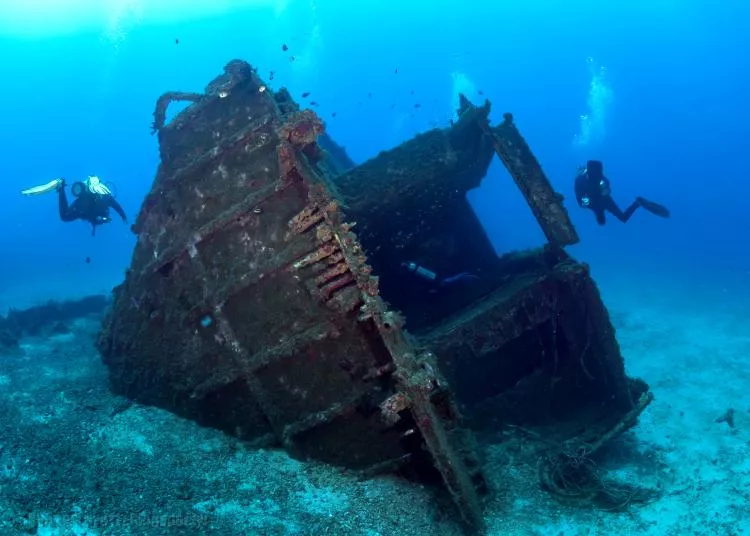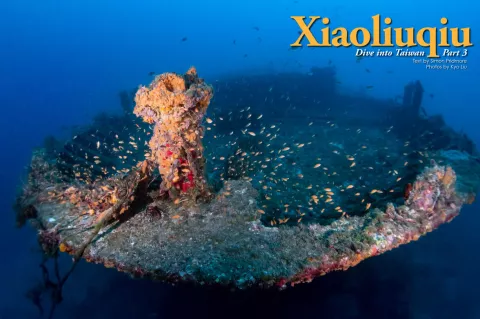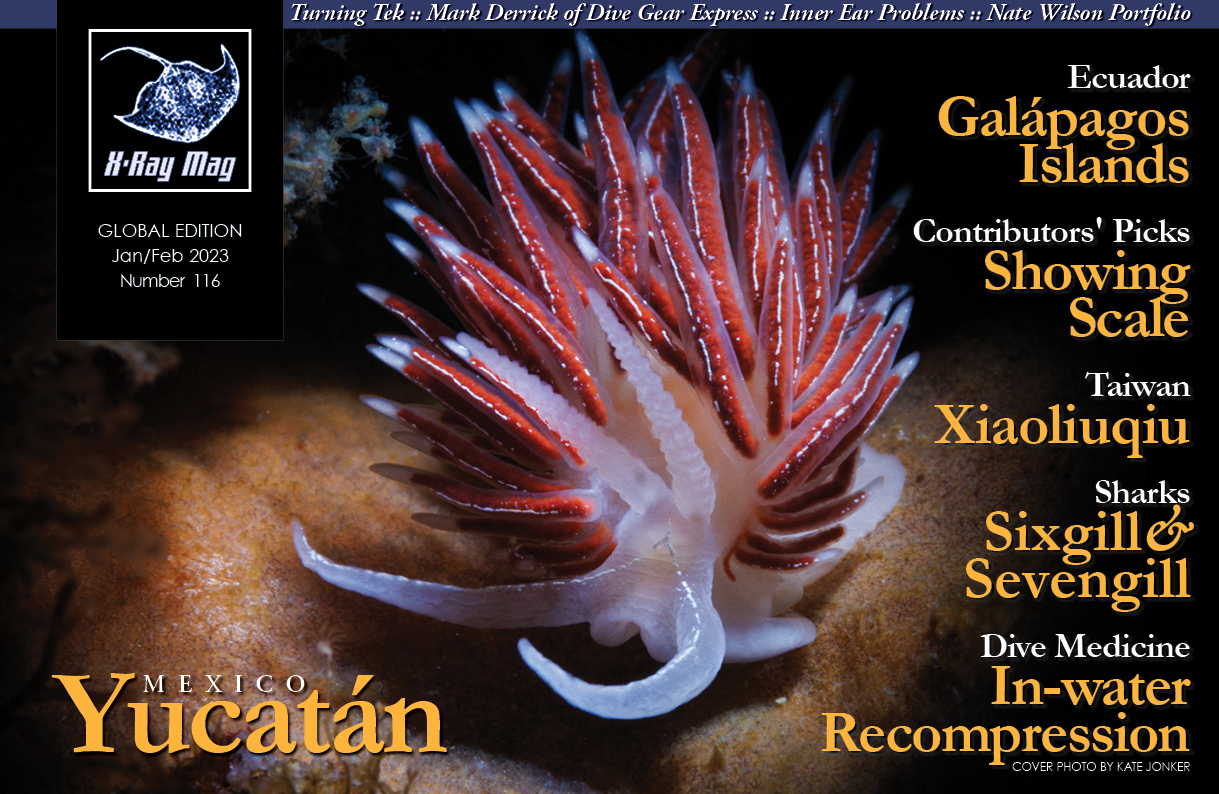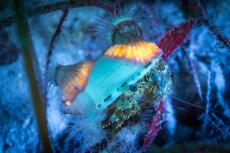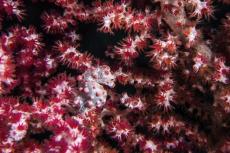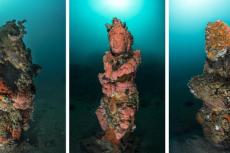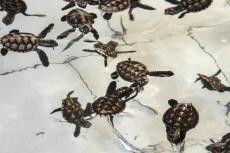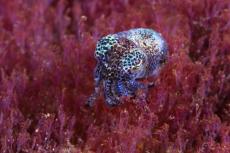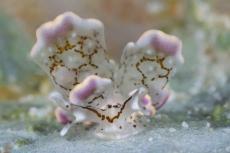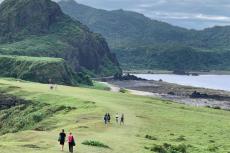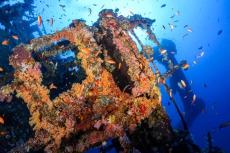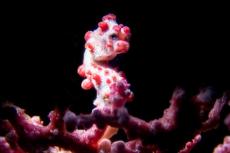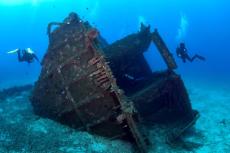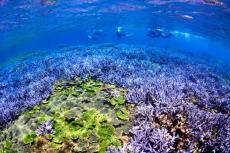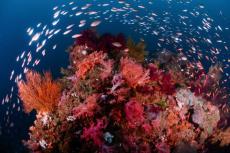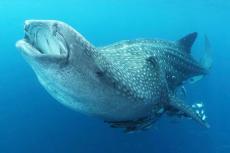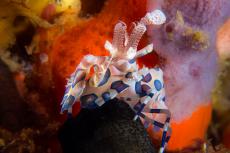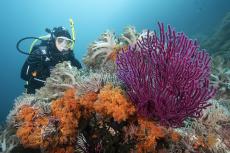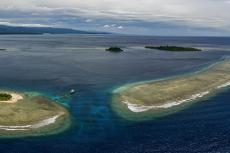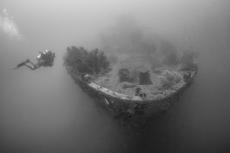Near the urban city of Kaohsiung in Taiwan is the tiny picturesque coral island of Xiaoliuqiu—a section of uplifted ancient limestone reef. It is the only place in Taiwan where one can dive in warm water all year round. Simon Pridmore has the story.
Contributed by
Taiwan is a group of Pacific islands surrounded by warm tropical seas. It is easy to get to and get around, and it is a first-world society with outgoing, friendly, laid-back people. Taiwan has some very good scuba diving and a network of dive centres and resorts with first-class professional staff, equipment and services. They offer scuba experiences, basic training courses and fun diving for a young, enthusiastic first generation of Taiwanese divers.
Yet, when divers elsewhere in the world think about diving destinations, Taiwan is unlikely even to be a blip on their radar screen. Very few people outside Taiwan have ever thought to enquire about the diving here, and very few people inside Taiwan have ever thought to tell anyone about it. Until a couple of years ago, that is, when some far-sighted folks asked me and Taiwanese underwater photographer Kyo Liu to write a book.
The book is called Dive into Taiwan, and this is the third in a series of six articles, each covering one of Taiwan’s diving regions, designed to give you a flavour of what to expect from a Taiwan dive trip. The book covers much more than diving. It talks about the people, countryside, cities, food and lifestyle to give readers a fully immersive experience—diving into Taiwan in every way. But, in this series, I will just focus on the underwater attractions, with the help of Kyo’s amazing photographs.
Xiaoliuqiu
Xiaoliuqiu (Little Liuqiu or Little Ryukyu) is a tiny coral island, a section of uplifted ancient limestone reef, that lies right on the doorstep of the two million or so people who live in the urban areas in and around Kaohsiung. The sea crossing is short, and it is a pretty place with a benign climate. Even in winter, the surrounding ocean never gets cold. There are some nice trails in the hills to wander around, the coastline is attractive, and there is one exceptional dive site in particular that makes a short trip here particularly worthwhile. Xiaoliuqiu is the only place in Taiwan where you can dive in warm water all year round.
In the late 20th century, Xiaoliuqiu underwent a rapid transformation from fishing village to tourist haven. For the past 30 years or so, Taiwanese people from the cities have been flocking here for fun. The island has one industry, and it never takes a day off. Over 80 percent of the population is involved in tourism in one form or another, so everyone is focused on giving visitors a good time.
As you might expect, in the early days, mass tourism brought environmental problems. However, in recent years, the government, tourism industry and island residents have begun taking remedial action. They have introduced conservation measures designed to reduce trash, improve the sustainability of tourist activity, and protect reefs and other marine life.
Legislation has been introduced to ban drift gillnet fishing within 5.5km (3 nautical miles) of the island and fishermen are being encouraged to use more sustainable techniques, such as pole-and-line fishing. Artificial reefs have been established, the island’s large population of turtles is protected by law, and the beaches where they commonly lay their eggs are closed during the hatching season.
Marine volunteer teams arrange frequent beach and underwater clean-ups—visitors are welcome to join in—and many bars and cafes have phased out single-use plastic and are now giving customers washable stainless-steel straws and cutlery instead.
Diving
Xiaoliuqiu is very easy to get to, even just for a day out of Kaohsiung, although it is much more rewarding to stay over for a night or two, especially if you want to get some boat diving in, as the dive boats typically leave the dock early in the morning. Most operators on the island offer packages that include scooter rental, accommodation and ferry tickets as well as diving.
If you are doing a beginner’s course or a scuba experience, your diving will be from the shore. If you are an experienced diver, make sure you book boat dives to get to the best sites and escape from the crowds.
Conditions
Xiaoliuqiu is warm all year round. It is hotter during the busy summer months, but that is also when there is most rain, and the typhoon season is between July and August. All of which means that the best time to dive here is between November and April.
You will have clear skies, dry days and air temperatures in the mid-20s°C (high 70s°F). The sea will be a balmy 26°C (79°F), as the current that cools Penghu’s waters in winter does not affect Xiaoliuqiu. Tucked in close to Taiwan’s western shore, the island is also protected from the worst of the northeastern winds.
There should be fewer people around in winter than in summer; but, having said that, it is no secret in Taiwan that Xiaoliuqiu is lovely at this time of year. So, at weekends, it may still be quite crowded. Visit on weekdays if you can.
Broken Shipwreck
The top dive site in Xiaoliuqiu is Broken Shipwreck, otherwise known as Shan Fu Shipwreck after the small west-coast port nearby. The ship looks like it might have been a small cargo vessel. It was deliberately sunk as a fish aggregation device, but it has been beaten up by storms and now lies in two sections. A fixed descent line brings you down to the first section, which consists of the remains of the bow, a squat pile of twisted steel rising from a patchy, sloping reef at 15m (50ft) and a mess of hull plates and other debris strewn over the seabed.
The second section, the stern, is more intact and wedged into a white sand patch at 19m (63ft). Here is where the fish are aggregating. A large goldspotted sweetlips holds court in what remains of the ship’s small superstructure, along with lionfish, which hunt for prey among the massed schools of copper sweepers and other small fish. The interior is open and free of any obstacles or cables.
Among the fish schools are several types of cardinalfish. There are silver-lined, gold, fine-line and Sagni cardinalfish, among others, and some of them are evidently paired up in couples. They swim in choreographed moves, one of each pair following the other’s every move. Their dance is entertaining and entrancing. In fact, the whole fishy scene inside this shipwreck is a videographer’s delight.
There are small groupers in and around the stern. Look out too for the distinctive swirly-blue-patterned juvenile emperor angelfish and the gaping mouths of moray eels poking their heads out of holes in the steel.
There are other attractions on this site as well. Swim away from the wreck across the sand flat, parallel with the sloping reef and down to around 22m (73ft), and you will find a couple of artificial reef structures, cages of steel, surrounded by a field of garden eels. There is no need to hurry over there, though. Move slowly and keep your eyes open as you make the crossing, and you may find octopus, flounders, tobies and ghost pipefish. We have found both rough snout and robust ghost pipefish here and, on one occasion, we found one of each paired up together in an unusual combination.
If you are diving on air, then, having spent quite a long time at around 20m (66ft), there is a good chance that you may be low on no-decompression time by now, so keep an eye on your dive computer and be prepared to make your way back to the sloping reef and the mooring line. Here is where you will find some of Xiaoliuqiu’s signature green turtles. They tend to mass on the reef top, as well as closer to shore next to Shan Fu Port itself, which is a popular beach diving spot.
If your primary focus is on critter hunting, rather than exploring the wreck, then do this dive in reverse, visiting the deeper section around the artificial reef structures first, before moving up to the stern, and finally the bow.
Net Cage and Beauty Cave
Near the northwestern tip of Xiaoliuqiu are two dive sites. Net Cage is a boat dive while Beauty Cave is a shore dive. The first is named after a failed fish farming operation, which bred fish in large, closed nets but lost its stock when thieves cut through the netting at night and spirited away all the contents.
This means there is no longer a focal point for the site, and it is now just an hour-long potter back and forth over a hard-coral reef top. Keep your eyes open, and you will be amply rewarded. Every dive here has its highlights, such as juvenile sweetlips wiggling about, schools of razorfish drifting along head down and tail up, trying to look like a patch of floating weed to deceive their prey, spotted crouchers, Mozambique scorpionfish or gorgeous blue and yellow ribbon eels.
Look among stands of Acropora coral for beautiful babies such as mimic filefish, butterflyfish and angelfish. There are plenty of anemones on the reef, garden eels in the sand patches and octopuses eyeing passing divers warily from their lair, hoping that their camouflage and quick wits will keep them safe.
There are also sea turtles here, either cruising over the deeper reef or surfing the waves in the shallows near Beauty Cave, where the snorkelers and try-divers are. You will not be making as much noise as the beginners splashing around near the shoreline, so expect the turtles to come your way for a little peace and quiet and have your camera ready.
Venice Shipwreck
Farther south along the western coast from the Broken Shipwreck is another buoyed sunken cargo vessel, completely intact this time. It is named after Venice Beach, the nickname given to an attractive stretch of white sand in nearby Geban Bay.
The wreck has been dropped onto the seabed at 40m (132ft), again in the hopes of attracting fish, but in this case, the aim has not yet been achieved. The descent line is attached to the bow at 30m (100ft), where there is some lovely, colourful coral growth. In fact, corals have taken hold all over the ship and decorate most of the available surfaces. Sadly, however, with the exception of some small fry, there is not much fish life on the wreck.
There is a large cargo hold to swim around, and the engine room is open, with plenty of artefacts still in place. The superstructure is clean and easy to explore, with light coming through large holes in the deck, illuminating the interior. This is a fun dive, although it is also a short dive. There is no reef wall nearby, which means that you need to stay at 30m (100ft) or deeper the whole time.
Xiaoliuqiu dive operators include Liuqiu Dive (liuqiudive.com), A-Gui Dive and Homestay (aguidive.com) and Odyssey Divers (odysseydivers.net).

